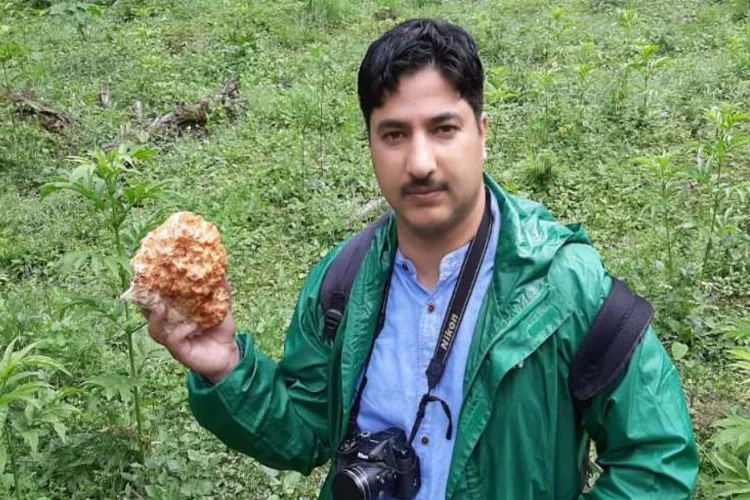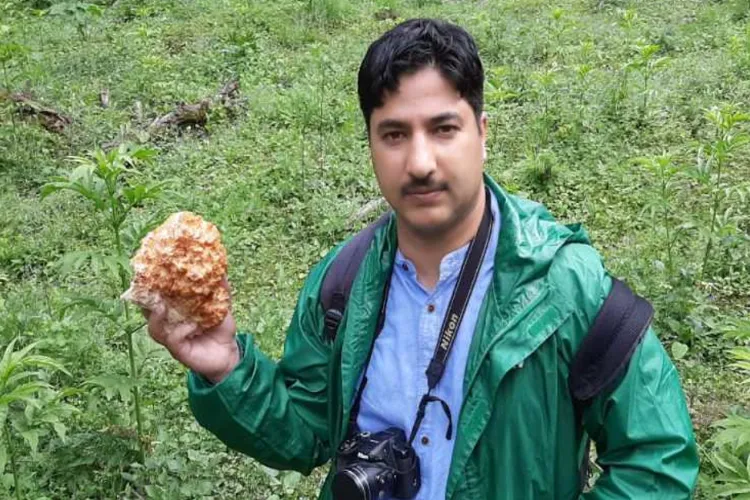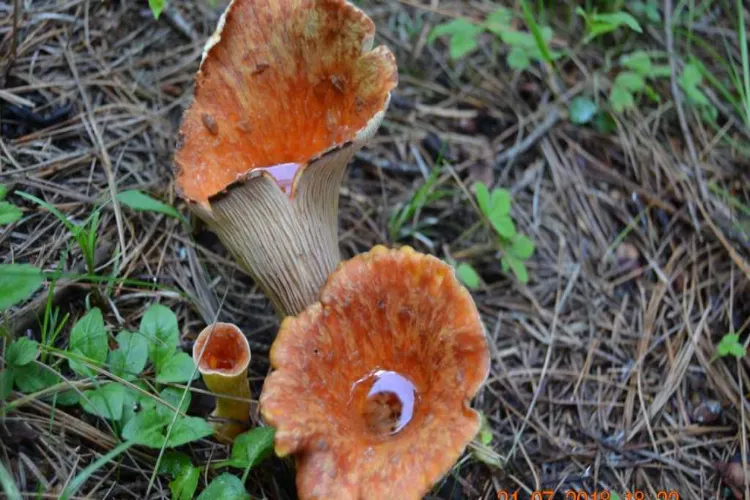
Srinagar
Dr. Rouf Hamza Boda has documented 100 indigenous and yet little known varieties of mushrooms in the Valley to earn the sobriquet of 'Mushroom Man of Kashmir'. This includes the most expensive fungi in the world – Gucchi (Morel) - and the exotic Porcini.
Dr Boda is the author of Nano Mushroom Identifier, a Book that is beginners’ guide on mushroom cultivation. He belongs to Doru Shahabad of Anantnag and works as a lecturer in Government Higer secondary School, Verinaag in South Kashmir.
He says, “Since I come from a village (Doru Shahabad, Anantnag), I used to be part of the mushroom hunting groups in spring. I used to collect mushrooms in wicker baskets. Along the way, I often saw mushrooms of various shapes and sizes. Sometimes, seeing the large size of mushroom was intimidating.”
 Dr Boda in the field for tracking mushrooms in the wild
Dr Boda in the field for tracking mushrooms in the wild
His childhood exposure made his pursue a Master’s degree in Botany and, he followed it up with a doctoral research on Mushrooms.
“My guide, Dr. Abdul Hamid Wani inspired me to research on wild mushrooms. I am the first person in the valley to research on wild mushrooms,” he says.
In his research paper, he has documented about 100 mushrooms from forest areas in South Kashmir and evaluated them for antioxidants. Rauf Hamza Boda says, “I have documented their nutritive value, cultivation pattern and studied their classification.”
He said that all mushrooms are fungi and they produce spores similar to pollen or seeds that are spread by wind. A mushroom mature only after this process is completed.In nature the mushroom grow in soil or on wood.
 A local variety of mushroom on South Kashmir jungles
A local variety of mushroom on South Kashmir jungles
Mushrooms grow well on a pine tree. Hamza explains: “Mushroom extracts water and some minerals from the soil and gives it to the roots of these trees and the tree undergoes photosynthesis. This in turn produces many sugars for the mushroom.”
He says Kashmir has many naturally growing types of mushrooms, some of which are edible, including well-known species such as buttons, oysters, porcini and chanterelles, he said.
However, there are inedible ones too that can cause abdominal pain, or vomiting if eaten. Some can even prove fatal.
He says mushrooms are today known for their significant health benefits as these contain a variety of medicinal properties. “Mushroom is a low calorie food. It is rich in many health-boosting vitamins, minerals and antioxidants. Mushrooms have been recognized as an important part of the diet.
For example, mushrooms exposed to ultraviolet light are a good source of vitamin D, an important component in bone and immune health. In addition, many of them have anti-cancer properties.”
However, he pointed out that climate change and urbanization have affected many mushroom species. As a result, there has been a gradual decline in the mushroom production including that of Gucchi mushrooms.
“I have been tracking them for the last 10 years. It is estimated that their production has decreased as a result of climate change, deforestation and habitat destruction. Similarly, other mushrooms that grow in early spring, such as the monkey cap, are beginning to disappear. Earlier, they were seen in March and April.
He said that mushroom growing is a profitable venture for anyone who has the basic knowledge about the technique and art of growing mushrooms.
